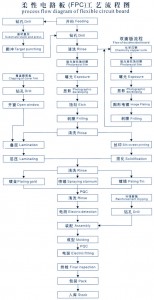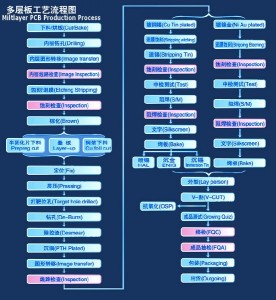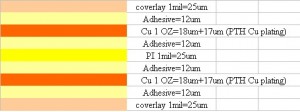Bare copper itself is very good solderability, but is easily exposed to air oxidation, and susceptible to contamination. This is also the PCB surface treatment must be the reason.
1. HASL
Hot-air solder leveling. The most common PCB surface treatment menthod. Lead and lead-free should be considered.
2. OSP
Organic solderability protective coating (OSP, Organic solderability preservative) is an organic coating to prevent oxidation of copper in the welding before, that is to protect PCB(printed circuit board) pad solderability from destruction.
3. ENIG
Nickel Immersion Gold. The copper surface is plated of Ni/Au. The deposition thickness of the inner Ni layer is generally 3~6um, the deposition thickness of the outer Au thin, usually 0.05 ~ 0.1um. Ni as the barrier layer between Cu and soldering tin. Welding, outside Au in the solder which melts rapidly with soldering tin and then turn into Ni/Sn intermetallic compounds with inner Ni. The gold-plated to prevent Ni oxidation during storage or passive, it should be enough gold plating density, the thickness can not be too thin.
4. Immersion Silver
Immersion silver process through the thin (about 0.1~0.4um) and dense to provide a layer of silver deposited organic protective film, the surface of the silver with the greatly extended life. Immersion Silver surface is very flat and very good with weldability.
5. Immersion Tin
Only used for two reasons for immersion tin process: first, the surface is very flat, coplanarity good; the other is lead-free. But in the immersion tine process easy to be with Cu/Sn intermetallic compound, Cu / Sn intermetallic is with poor solderability.
These are five main PCB surface treatments, since each have their own unique surface treatment technology, application is not quite the same.



